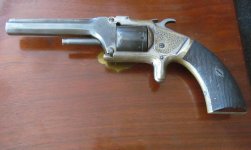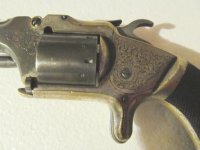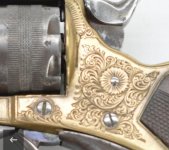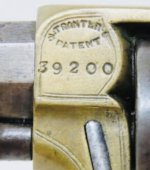markieh
Member
I just bought my first Smith antique revolver but I'm having some doubts. The first thing that doesn't look right is that the rear of the frame is flanged where it meets the grips (Like a model 1). Most pictures of model 2s on the net the frame is flat and the grips taper to meet the frame.
The second thing is that the grips are very finely checkered, all over. They look to be original to the gun.
Finally (and this is the biggie). It's a 32 rimfire...... and has a 7 shot cylinder.
Other than proof marks (Birmingham, UK) there are no other identifying marks. It has a 4.5" barrel and is quite nicely scroll engraved. The frame is nickel plated although fairly worn.
I'm not sure how to post pics on the forum but if anyone could do it for me I could e-mail some to you.
The second thing is that the grips are very finely checkered, all over. They look to be original to the gun.
Finally (and this is the biggie). It's a 32 rimfire...... and has a 7 shot cylinder.
Other than proof marks (Birmingham, UK) there are no other identifying marks. It has a 4.5" barrel and is quite nicely scroll engraved. The frame is nickel plated although fairly worn.
I'm not sure how to post pics on the forum but if anyone could do it for me I could e-mail some to you.











